Free-ranging, as wonderful as it is for your ducks, always carries some level of risk. Free-range ducks can be extremely vulnerable to predators.
Whether your ducks can free-range depends on your location, the predators in the area, and other factors you may not be able to control. However, one of the most important factors, and one you have some control over, is how many steps you are able to take to protect your ducks.
Here are eight things you can do to reduce the chances of a predator attacking your ducks and keep them safe.
Disclosure: This post contains affiliate links. As an Amazon Associate, I earn a commission if you purchase something through a link on this post, at no additional cost to you.
1. Ground cover
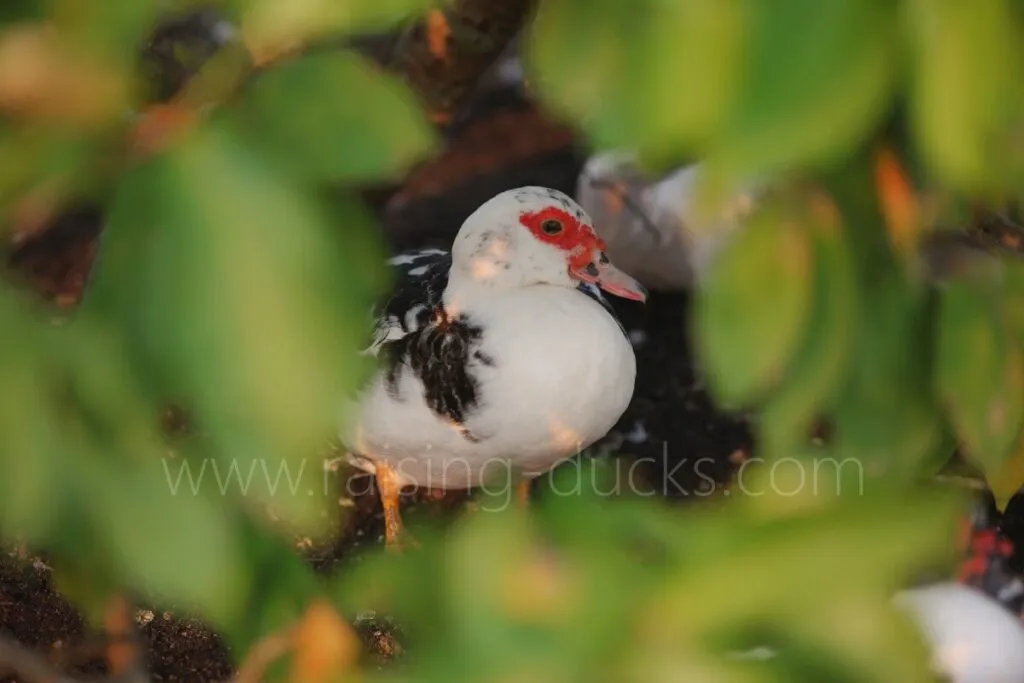
In many areas, hawks and other aerial predators are one of the biggest dangers. Ensuring your ducks have plentiful access to cover is one of the best ways to protect them from hawks.
Our ducks are rarely more than fifty feet from somewhere to hide. They spend much of their day in a sheltered grove of trees, which not only protects them from hawks but is also cool and shady. They also take shelter under vehicles, trailers, awnings, and our solar panels.
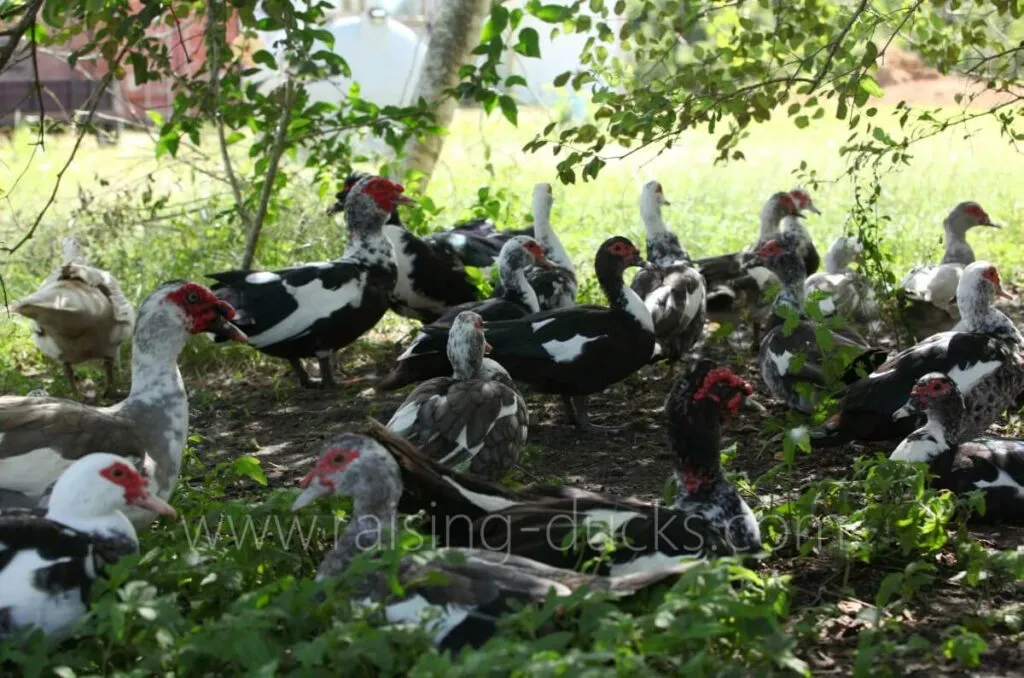
Our flock of ducks enjoying the safety of a nice, shady tree.
If you let your ducks free range, be sure they have places to hide. Plant bushes or construct shade structures if there isn’t already good cover on your property.
A 2014 study found that chickens free-ranging in an olive grove were far less likely to fall victim to predators than chickens in open pasture.
2. Fences
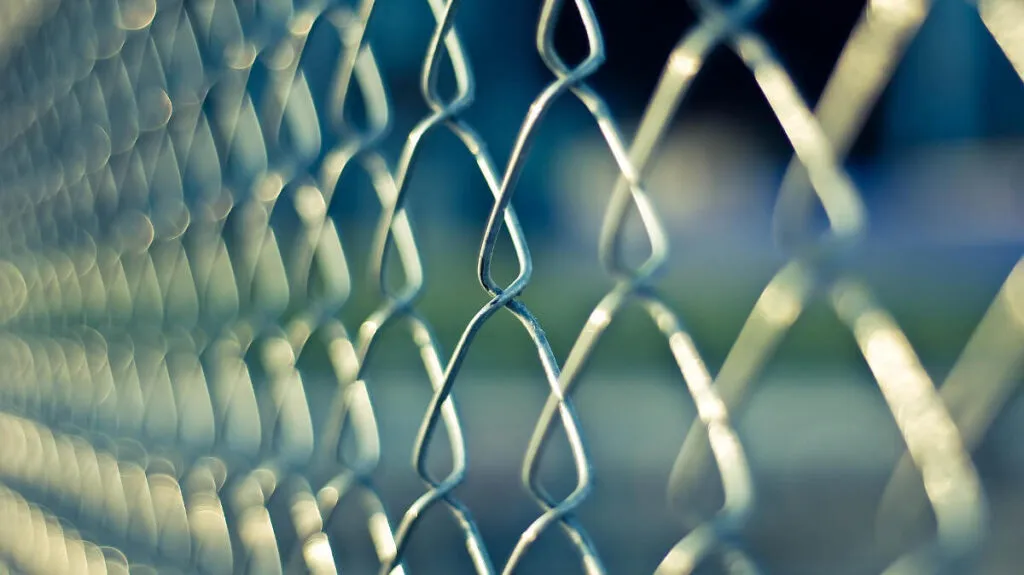
Some argue that it’s not free ranging if fences exist. If the fenced area is large enough, however, it’s effectively free-ranging, but safer.
I say my ducks are free range, even though they’re technically in a fenced area encircling approximately three acres. They don’t even use the whole area, so the fences are hardly limiting their ranging at all.
Consider electric poultry netting. It will keep out nearly any land predator, and it’s easy to move, so even if the area you fence isn’t extremely large, you can move your ducks to fresh pasture anytime you like, giving your ducks all of the benefits of free ranging without most of the drawbacks.
3. Dogs and other protection animals
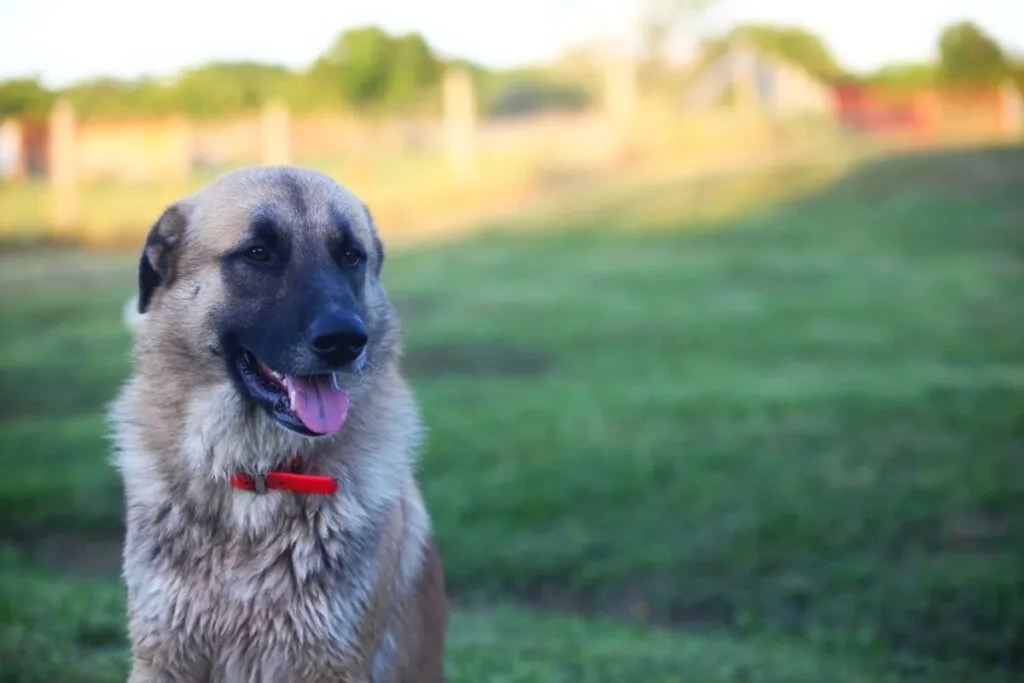
Our GSD/Great Pyrenees cross, Leo.
Livestock guardian dogs (LGDs) can be amazingly adept at protecting livestock. They are primarily used to protect sheep, but can also protect other animals, including ducks and chickens.
LGDs are a major commitment, especially if guarding ducks will be their only purpose. They also require training or they will become duck predators themselves. If you buy a puppy to train yourself, it may kill a duck or two during its puppyhood. We have a German Shepherd/Great Pyrenees cross who killed two ducks when he was a puppy, but now he never touches them.
Even if you don’t have a dedicated LGD, many dogs, as long as they get along with your ducks, may provide some degree of protection. Their mere existence in the yard may deter some predators. We also have a German Shepherd who will intervene any time she hears a scuffle. More often than not, the scuffle is just ducks squabbling, but she has saved at least one of our ducks from a hawk.
Geese can also be used to protect ducks. A single goose raised with ducks is most effective. Flocks of geese tend to mind their own business rather than mingling with the ducks, but a single goose will stay with the ducks. Geese aren’t as effective as dogs, but they’re much cheaper and easier to manage.
Chicken people often have roosters to protect their hens. Unfortunately, drakes don’t try to protect their ducks the way roosters do.
Many other large animals may help to deter some predators. Donkeys, llamas, and alpacas are sometimes used to protect sheep and can ward off foxes, dogs, and coyotes. They can also be used with ducks and chickens.
Pigs, cows, goats, and sheep won’t protect ducks, but their existence may help to deter some predators.
You can also supervise your ducks yourself. Some people only allow their ducks to free-range while they are outside and watching them. Even if you don’t do this, try to keep an ear and an eye out for any signs of commotion in the yard.
4. Keep ducks cooped at night
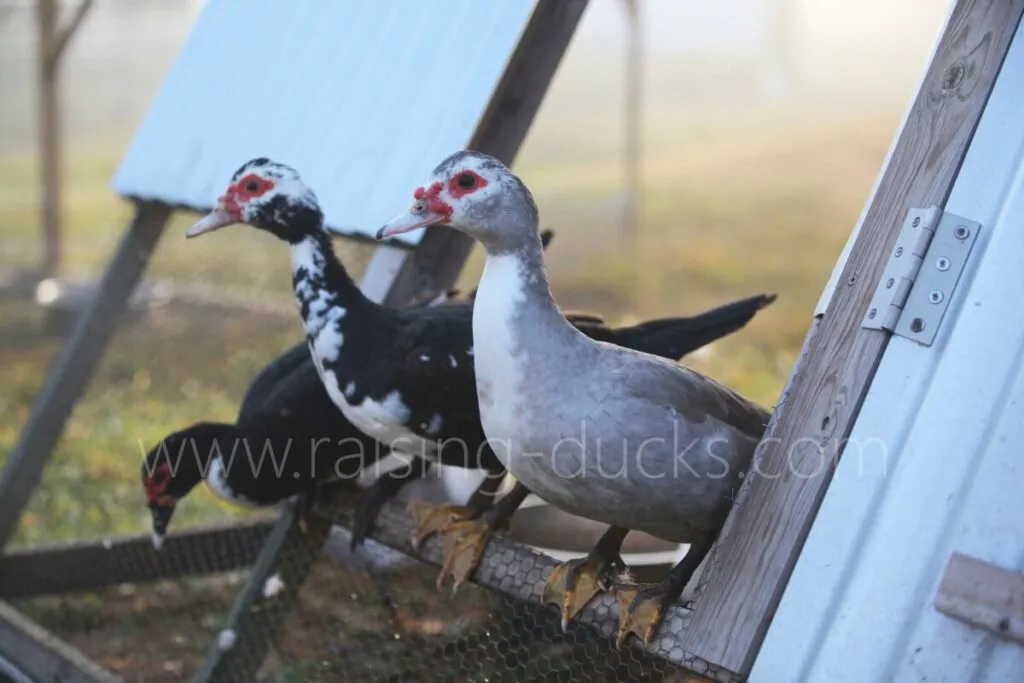
Bugs, Espresso, and Joy jumping out of their cozy nighttime coop.
This isn’t so much a tip as a strong recommendation. Don’t leave your ducks free for the night. Many predators are most active during the night.
Furthermore, it’s important to check on your ducks daily: do a head count and make sure they’re all acting normal and eating. If you never lock up your ducks, you might have a hard time checking on each one.
5. Deter predators
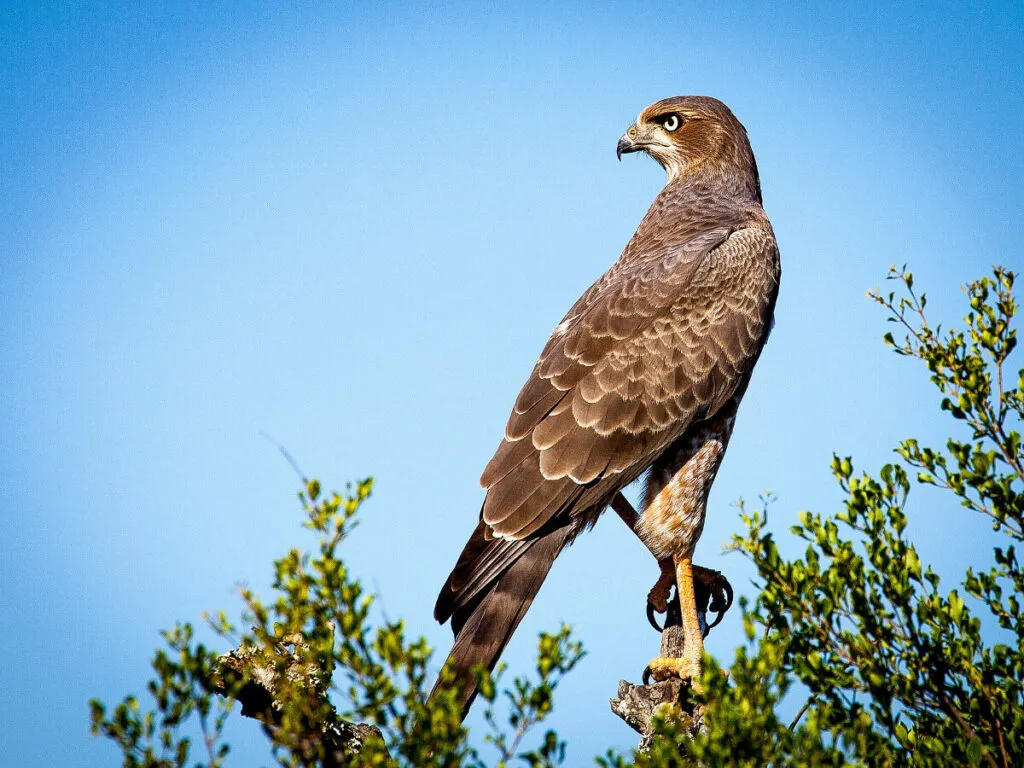
Predators can easily hide in heavy brush and tall grass. Ground cover, as mentioned above, deters aerial predators, but too much ground cover can help land predators like foxes sneak up on your ducks. Try to keep your yard mowed and free of heavy brush.
Don’t leave poultry feed, trash, or anything else that might attract predators laying around.
Fake owl decoys and scarecrows can deter hawks. Shiny objects and reflective tape strung around your duck yard can also scare hawks away. Even noise can be used as a hawk deterrent.
Lisa Steele sprays wolf urine on trees around her property to deter some predators.
Predator repellent lights, which use flashing red lights, can be used frighten potential predators, but are only useful at nighttime.
6. Trapping, relocating, and killing predators
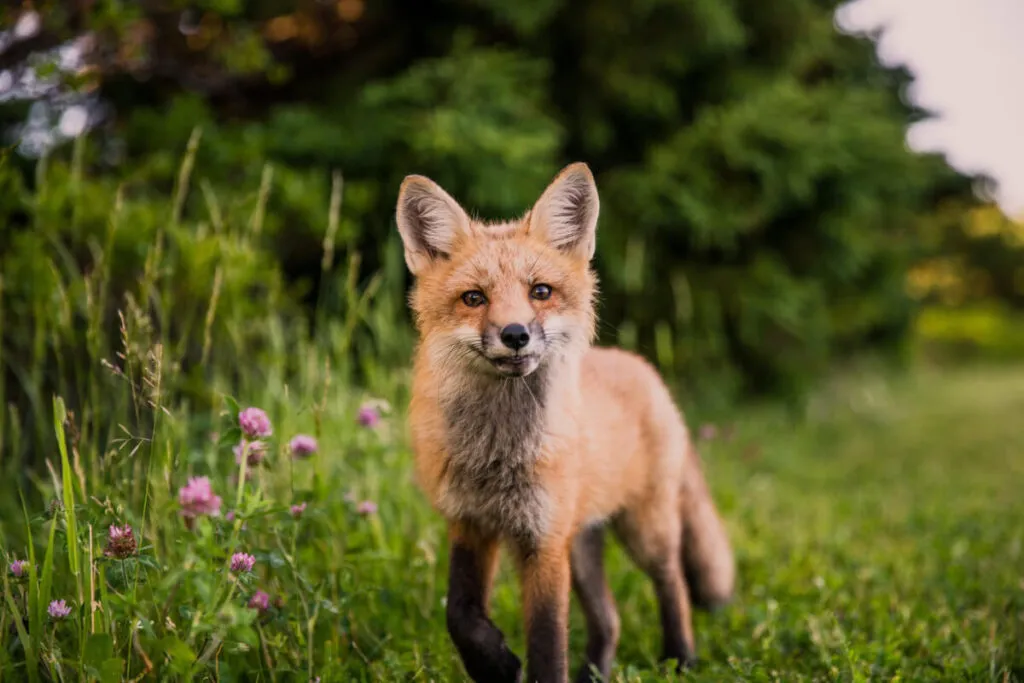
If a predator attacks, it will likely attack in the same area again. Hence, some people choose to kill or trap and relocate predators, especially ones that have already attacked their poultry.
Know the local and national laws on trapping, killing, and relocating animals before you do anything. Some animals are illegal to kill, and trapping and releasing is illegal in some areas.
7. Choose active, naturally-colored duck breeds
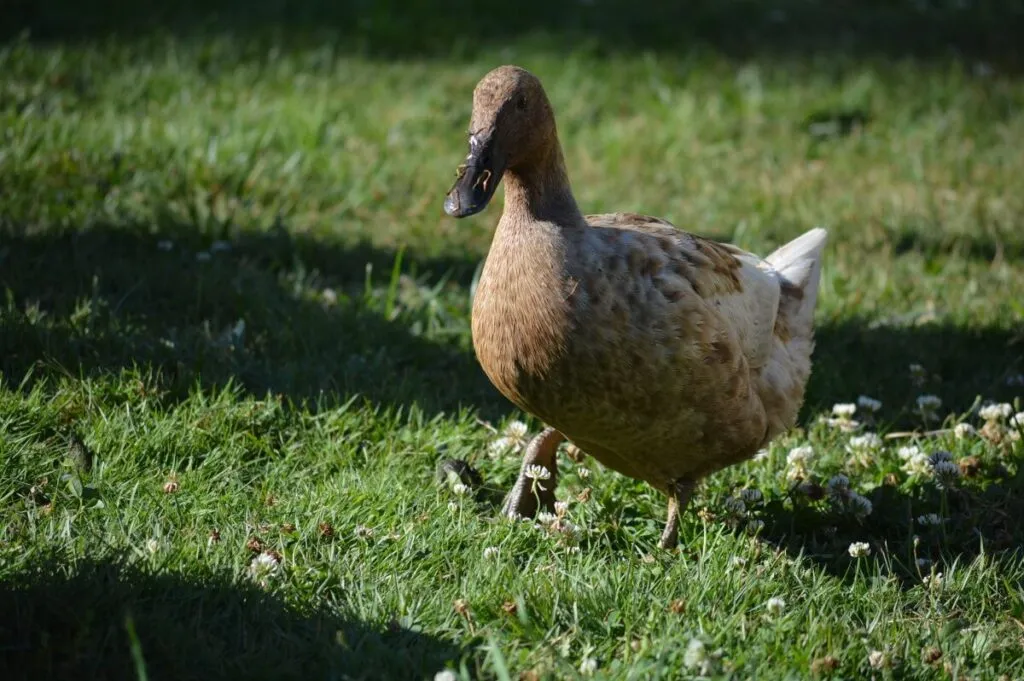
Photo credit: “071513 028” (CC BY-NC-ND 2.0) by Crackerdogfarm
Not all duck breeds are well-suited to a free-ranging lifestyle. If you aren’t already settled on a breed, consider choosing one that will be safer free-ranging.
Large breeds that can’t move quickly are more likely to be killed by predators. Choose a small or medium-sized breed.
White and light-colored ducks are also more prone to predation. Ducks with natural or close to natural feather colors and patterns will be more camouflaged in grass and brush.
A fat, lazy Pekin snoozing in the open is not only a sitting duck but also a conspicuous, gleaming white target — much easier for a predator to pick off than an athletic, savvy, camouflaged Mallard.
Khaki Campbells, Runners, and Dutch Hookbills are also good breeds.
As an example of how important breed and genetics are, read these articles about free-range chickens:
Extreme Free-ranging Chickens: No Coop, No Fence, No Problem
A Real-Life Tale of Extreme Free-Range Chickens – in a Predator-Rich Area!
8. Make sure your yard is safe

Predators aren’t the only danger. Your yard can be a source of danger by itself.
Don’t use pesticide, herbicide, or weed killer on any area the ducks will access. These substances are usually toxic to ducks. Pesticides that are safe for dogs aren’t necessarily safe for ducks, because ducks will ingest the grass and dogs won’t. Many fertilizers are also dangerous to ducks, so do your research before using one.
Before letting your ducks out, look around the area for anything that might endanger them. Remove any small objects they might swallow, such as screws.
Check for plants that are toxic to ducks and remove them or block the ducks’ access to them before allowing your ducks to free-range. Here are two lists of toxic plants:
http:
https:
Though there is no such thing as truly safe free-ranging, the measures you take to protect your ducks can mean the difference between “too dangerous” and “acceptably safe.” Of course, only you can decide what you deem acceptably safe, so it’s possible even all these measures won’t be enough for you or your situation, but they can help a lot.
To learn more about the ups, downs, ins, and outs of free-ranging, read our article about it:
Free-Ranging Ducks 101: Everything You Need to Know
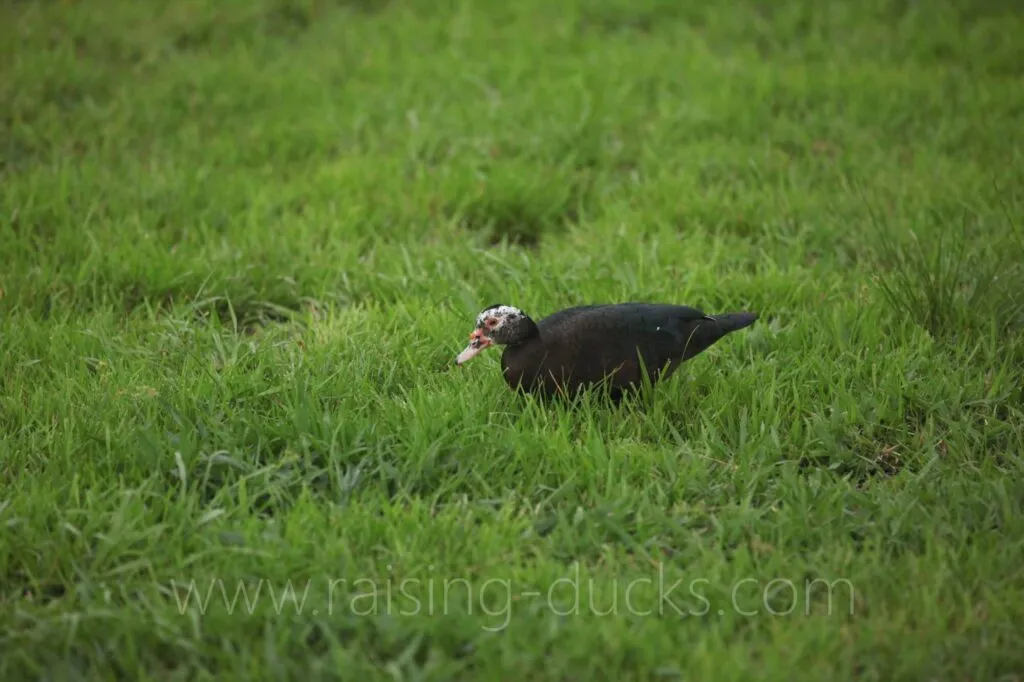
Leave a comment
Your email address will not be published.